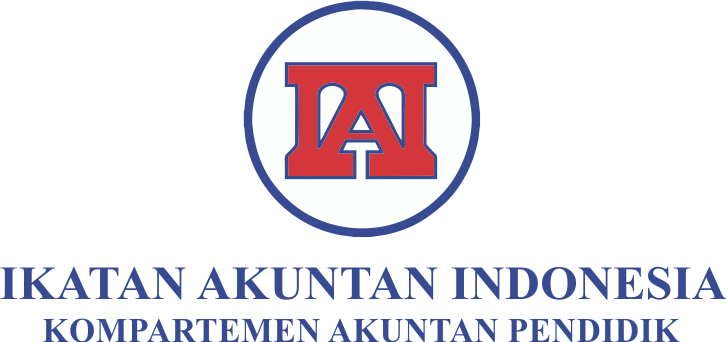Deteksi Manipulasi Laporan Keuangan Menggunakan Model Beneish M-Score pada BUMN yang Terdaftar di Pasar Modal
Abstract
Inefficiency, mismanagement, political elements, conflicts of interest are some of the causes of problems in SOE. The purpose of this study is to provide empirical evidence of manipulation of the financial statements of SOEs. By using a sample of 16 state-owned companies with 10 years of observation, we find that there are 98 companies classified as manipulators and 62 non-manipulator companies out of 160 company year observations. We offer to use the Beneish M-Score model to detect manipulation of financial statements involving 8 financial variables namely, DSRI, GMI, AQI, SGI, DEPI, SGAI, LVGI and TATA. Our research findings are that GMI and TATA affect the manipulation of financial statements. Our findings show that SOEs improve permanent income by increasing sales and accounts receivable data so that margins are more acceptable by relevant users. Suboptimal margins are evidence that there are inefficiencies in SOEs. In addition to GMI, SOE management also utilises the flexibility of the company's accruals by improving the cash element, and the company's liabilities to assets so that it appears to have a good solvency value as a representation that SOEs have promising subsequent growth
Keywords
Full Text:
PDFReferences
REFERENSI
AICPA. (n.d.). Consideration of Fraud in a Financial Statement Audit (Codified in AICPA professional Standards.
Beneish, M. D. (1999). The Detection of Earnings Manipulation. Financial Analyst Journal, 24-36.
BUMN. (2020). Laporan Tahunan 2020 Kementerian BUMN . Jakarta: BUMN.
Daniel A. Cohen, T. Z. (2006). Weighing the evidence on the Relation between External Corporate Financing Activities, Accruals and Stock Returns. Journal of Accounting and Economics, 87-105.
Elsa s Yuliana, Y. A. (2021). Beneish M-Score Model untuk Mendeteksi Kecurangan Keuangan BUMN di Indonesia. Jurnal Inovasi Penelitian, 765-774.
G.V. Slesarenko, T. (2022). Role of Accounts Receivable In Accounting (Financial) Statements. Bulletin of Udmurt University Series Economics and Law, 656-661.
Gunny, K. (2010). The Relation Between Earnings Management Using Real Activities Manipulation and Future Performance: Evidence From Meeting earnings Benchmarks. Contemporary Accounting Research, 855-888.
Hidayat, N. (2019). Ditemukan Pelanggaran pada Audit Laporan Keuangan Garuda, Izin AP Kasner Sirumapea dibekukan. Jakarta: PPPK Kemenkeu.
J.Simko, J. B. (2002). The Balance Sheet as an Earnings Management Constraint. The Accounting Review 77 (supplement), 1-27.
Mahruddin Harahap, A. R. (2021). Mampukan Privatisasi Meningkatkan Efisiensi Perusahaan? Kajian Empiris Pada BUMN Sektor Konstruksi. AFRE Accounting and Financial Review, 206-213.
Niamh M. Brennan, M. M. (2008). Financial Statement Fraud: Some Lessons from US and European Case Studies. Australian Accounting Review, 49-61.
Nurina P Tyas, N. A. (2020). Model Prediksi Financial Distress Grup Perusahaan Keluarga di Indonesia dengan Model Beneish Ratio Index. Jurnal Riset Akuntansi Dan Perpajakan, 235-246.
Nurul Aini, E. S. (2021). Pendeteksian Financial Statement Fraud Melalui Komponen Fraud Triangle. Journal of Applied Accounting and Finance.
Rezaee, Z. (2005). Causes, Consequences and Deterrence of Financial Statement Fraud. Critical Perspectives on Accounting, 277-298.
Richardson S.A, R. (2003). External Financing, Capital Investment and Future Stock Returns. SSRN electronic Journal.
Rivai, V. (2010). Manajemen Sumber Daya Manusia. Jakarta: Rajawali Press.
Roychowdhury, S. (2006). Earnings Management Through Real Activities Manipulation. Journal of Accounting and Economics, 335-370.
Sihombing, R. P. (2021). Financial Statement Fraud and Firm Performance Empirical Evidence From Indonesia. Jurnal Ilmiah Akuntansi dan Keuangan, 824-847.
Steven L Skalak, T. G. (2011). A Guide To Forensic Accounting Investigation. Canada: Wiley.
Yuli A, T. W. (2021). Metode Beneish M-Score: Deteksi Kecurangan Laporan Keuangan Perusahaan BUMN di Indonesia. Prosiding Seminar Nasional KBK.
Zhaoyang Gu, P. C. (2011). The Accrual Anomaly and Operating Cash Flows: Evidence From Accrual Components. SSRN Electronic Journal, 1-47.
DOI: https://doi.org/10.37058/jak.v18i1.5609
Refbacks
- There are currently no refbacks.
Copyright (c) 2023 JURNAL AKUNTANSI

This work is licensed under a Creative Commons Attribution-NonCommercial-ShareAlike 4.0 International License.

Jurnal Akuntansi by Jurusan Akuntansi Fakultas Ekonomi dan Bisnis Universitas Siliwangi is licensed under a Creative Commons Attribution-NonCommercial-ShareAlike 4.0 International License.
Based on a work at http://jurnal.unsil.ac.id/index.php/jak.
Jurnal Akuntansi Visitor Counter JAK Stats






